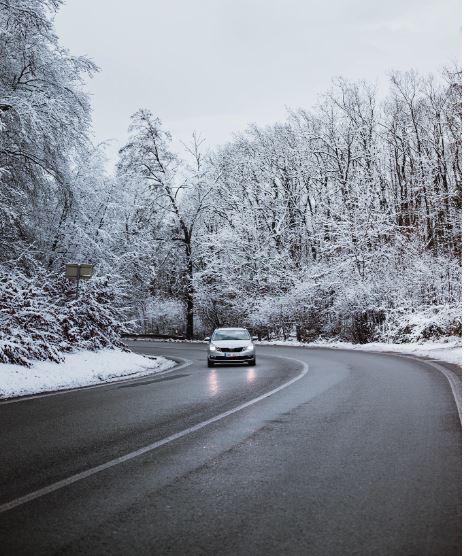Don’t Get Stranded! Your Handy Vehicle Checklist for Winter
As the weather gets colder, you know you’ll need to prepare your car for colder weather. The streets will be more challenging to drive on. You must ensure your vehicle is safe for you and your family. Here are some aspects of your vehicle to check before the winter weather comes:
Contents
Take Care of Your Tires
According to Carsurance, 54% of cars that break down on the roads do so because of tire problems. First, check the treads of the tires for uneven wear. Then, look at your tires and inspect them for nicks and cuts. Check your tire pressure each time you change your oil.
To check your tire pressure, try the “Penny test.” According to Pellman’s Auto, you begin by inserting a penny into the tread groove of a tire. Lincoln’s head should be facing you, and you should insert the penny far enough inside so you don’t see the head anymore. If you can see Lincoln’s entire head, it’s time to get new tires.
Keep Your Windshield Clear
Before the weather gets cold, check your windshield and your wipers. You don’t want to wait until you’re driving in the first snowstorm to find out you can’t clear your windshield. It’s easier and safer to do it now. Be sure you have an extra container of washer fluid, an ice scraper, and a snow brush in your car before winter arrives.
The next time you take your car to a mechanic, ask them to check your car’s belts and hoses. They should be checked for cracks or other signs of weakness. Cold weather tends to cause car belts and hoses to weaken. Replacing those inexpensive parts now, if necessary, will help you to rest easily from driving your car during the winter months.
Maintain Your Fluid Level
According to Kelly Blue Book, by ensuring your fluid levels are adequate and by keeping to regular maintenance schedules, your transmission should be able to provide over 100,000 miles of service. Before winter, you should have your oil changed because cold weather will thicken your oil. Even if you’re not due for an oil change, it’s wise to do it before the weather turns cold. Some auto experts recommend requesting a thinner oil during the winter time but check your car’s owner’s manual before making that choice.
Additionally, you should check to ensure you have enough antifreeze. This will prevent your engine from freezing, so it’s vital to have enough in its system. Consult your owner’s manual to determine the correct antifreeze type.
Protect Your Car’s Power
Cold weather will also affect the performance of your car’s battery. Have your car’s battery checked to ensure it has enough power to keep your vehicle able to start during the winter. Keeping your engine in good running order will also ensure your heater, humidifier, and defroster will remain in working order.
According to eTags, almost 119,000 drivers have reported engine and coolant issues with their cars. The frequency of those reports means those issues are the most common car problems. There are a few more things that will help your car get ready for the winter. One of the most essential preparatory actions is to place an emergency kit in your trunk, which includes a flashlight, a pair of jumper cables, and a first aid kit.
If you review this checklist now, your car will be ready for winter. Remember to keep your gas tank at least one-quarter full at all times and to keep your identification in the glove compartment in case you need it. In the winter, the weather can turn hazardous quickly, so this preparatory list could turn out to be your best friend for your winter auto safety.



